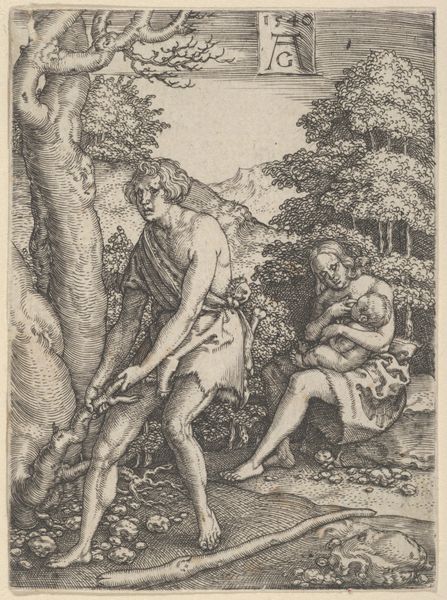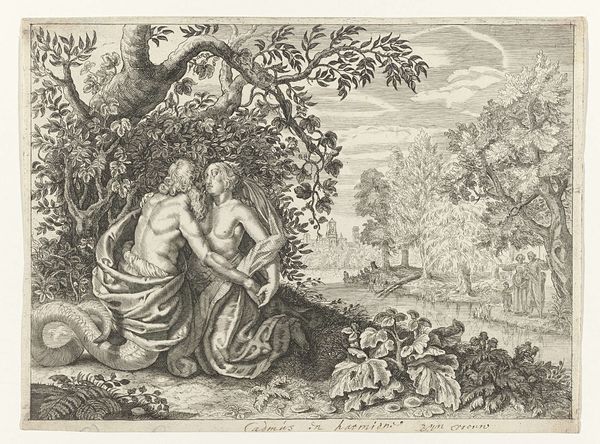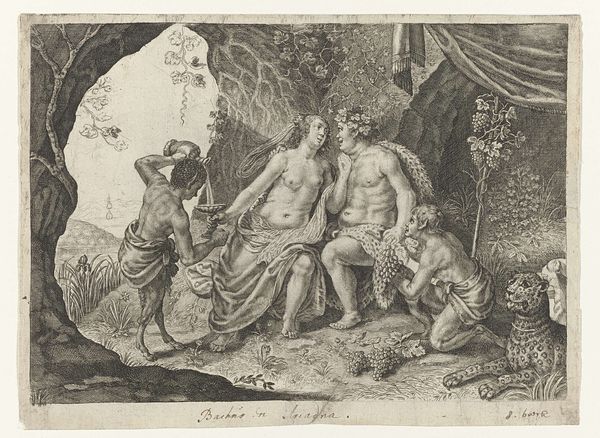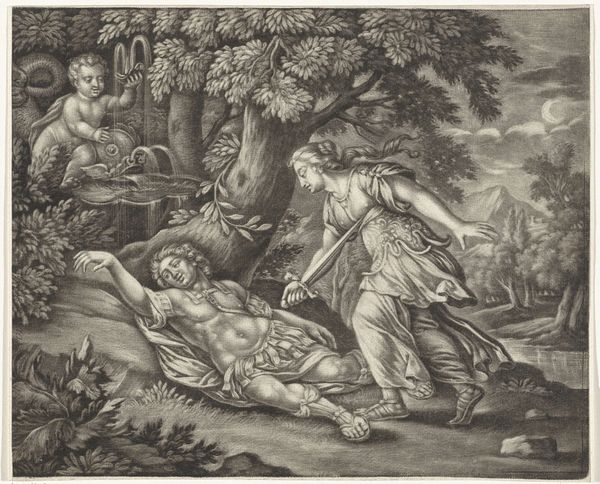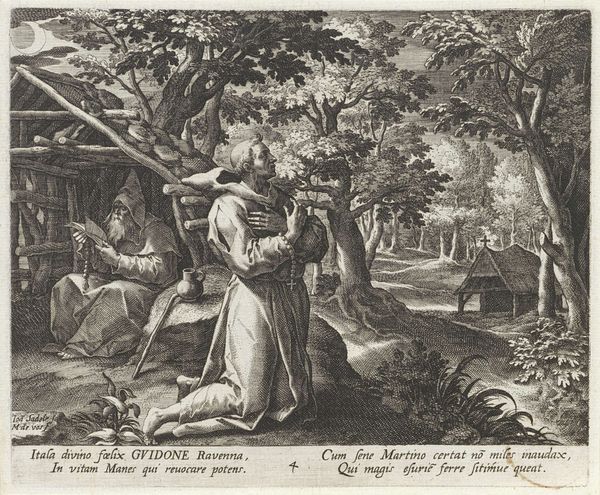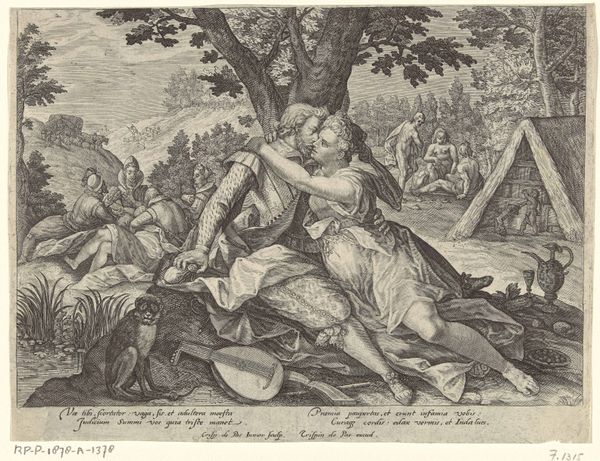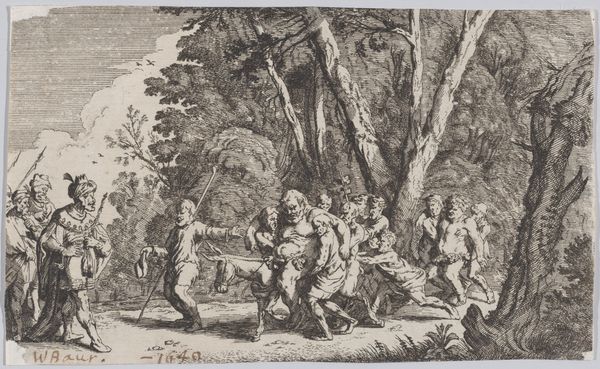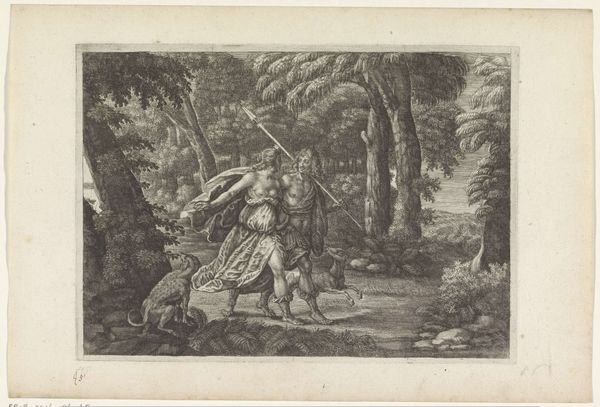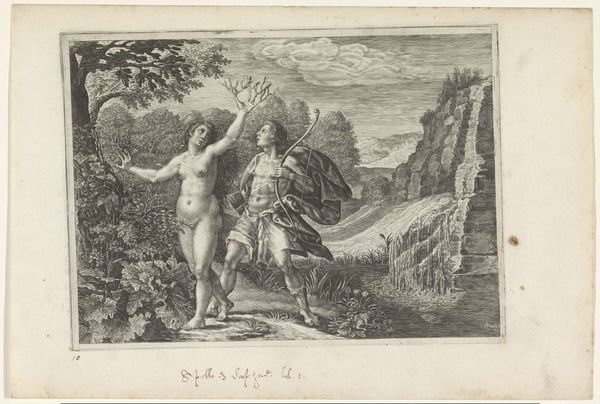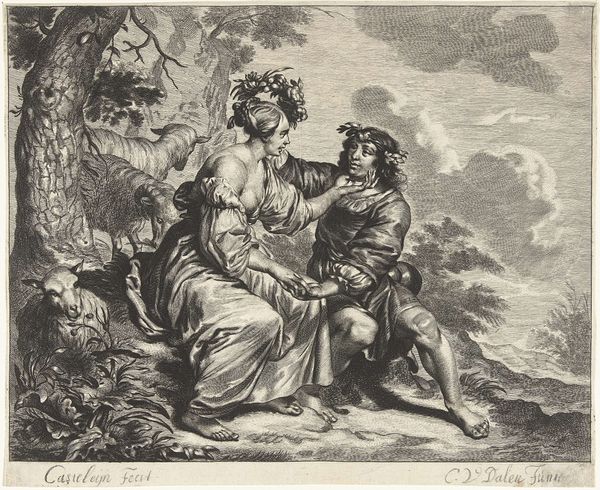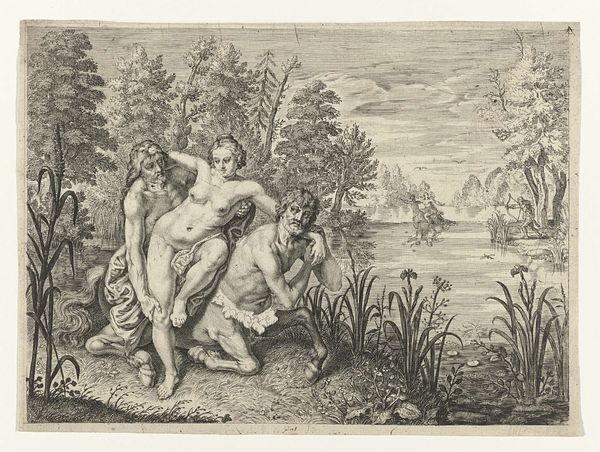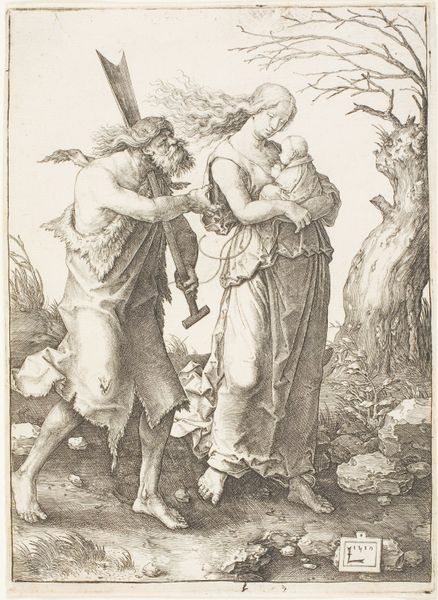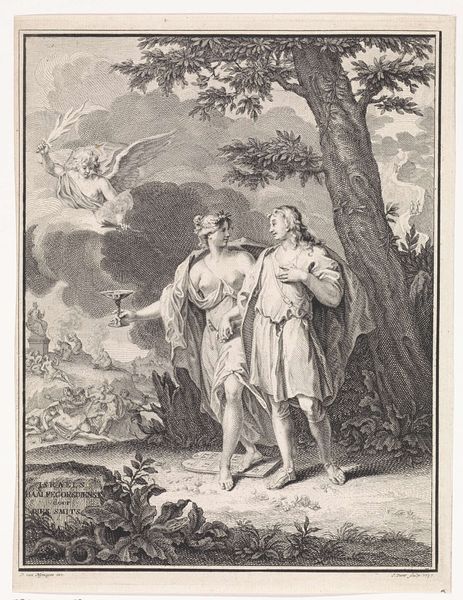
etching, engraving
#
narrative-art
#
baroque
#
pen drawing
#
etching
#
figuration
#
mythology
#
engraving
Dimensions: height 170 mm, width 233 mm
Copyright: Rijks Museum: Open Domain
Editor: This is "Circe verandert Picus in een specht," made by Crispijn van de Passe II around 1636 to 1670. It's an engraving. The detail is impressive, it feels dense, and almost claustrophobic, and Baroque in its style. How would you interpret the balance between figures and the setting here? Curator: Considering it formally, observe how the density you mentioned arises from a masterful use of line. The artist utilizes hatching and cross-hatching techniques to define form, create tonal variations, and simulate depth within a two-dimensional plane. Notice how these intricate lines create textures: the smooth skin of the figures contrasting with the rough bark of the trees. Editor: Yes, the textural difference really brings the characters forward. Is that related to the use of light? Curator: Precisely! Light plays a pivotal role in sculpting the figures, and the strategic placement of shadows augments the overall dramatic tension, pulling your focus to the foreground where the narrative unfolds. Look how this highlights key areas and enhances the tactile quality of the engraving. Does this emphasis on line and form resonate with typical characteristics you find in other Baroque prints? Editor: Yes, the contrast definitely reminds me of other Baroque engravings. It's a good reminder to really look closely at how texture and light create impact even in a black and white work. Curator: Absolutely. Appreciating the meticulous detail and the interplay of light and shadow unveils the artist's skillful manipulation of form, contributing significantly to the aesthetic appeal of this engraving.
Comments
No comments
Be the first to comment and join the conversation on the ultimate creative platform.
